Trip Inspiration
Speak to one of our travel experts today
and start planning your tailor-made vacation

Alistair
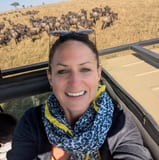
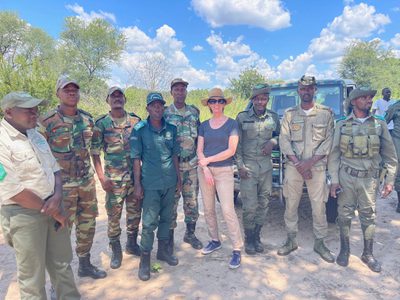
Once you have been on safari once, your thoughts immediately flick impatiently to the next time you are able to go. The second time you go, you will want to go to a different location and see what you didn’t see last time. The third time will likely be in search of a particular animal or visiting a specific area. And so the story continues. Once you have been lucky enough to be on safari a handful of times and have ‘ticked off the big 5’; seen the various migrations, stayed at some outrageously beautiful accommodation, walked, driven, ballooned and Mokoro’d across the continent, you start to wonder “what’s next?” Where is the next safari frontier?
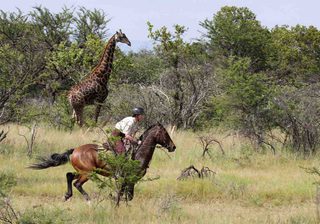
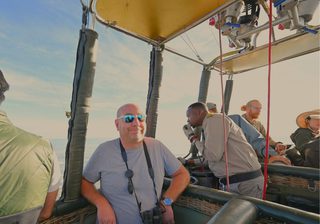
At this point in a life’s safari journey, most people are looking for peace and tranquillity. The option to enjoy the wilderness on their own terms and without others to bother them with vehicle sounds, shouts or even just their very presence. The perfect safari becomes just you, your guide and the environment – moving happily through the bush, fully content with what nature displays for you and nothing else. Absolutely nothing else.
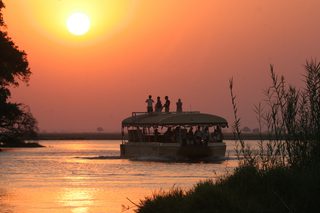
These areas do exist, but they tend to be either very high-end lodges or private houses in areas on private concessions or are in areas that are less accessible and so costly to get to. Angola is trying to change that by starting to let people into Luengue-Luiana National Park, down in the south eastern tip, which borders what used to be called the Caprivi Strip in Namibia, now called the Zambezi Region, to the South and remote western Zambia to the east. Angola has had very few Western visitors in this part of the country for a long, long time due to the Angolan civil war.
The Angolan Civil War was one of Africa's longest and most devastating conflicts, lasting from 1975 to 2002. This 27-year war emerged immediately after Angola gained independence from Portugal and became deeply entangled with Cold War politics, making it a proxy conflict between global superpowers. The conflict finally ended in 2002 following the UNITA leader, Jonas Savimbi’s, death in combat. By then, the war had claimed an estimated 500,000 to 1.5 million lives, displaced millions more, and left the country's infrastructure in ruins. Not to mention the damage done to its wildlife population, which was heavily poached throughout.
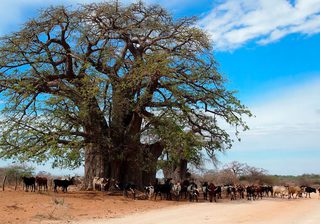

Simone Micheletti, founder of The Wild Waters group of lodges in Namibia (Serondela Lodge, Nkasa Lupala Tented Lodge and Jackalberry Tented Camp) has spent the last 3 years working with the Angola Tourism Authority in order to get access to Luengue-Luiana National Park directly from Namibia, about 2 hours west of Katima Mulilo. The closest official border crossing is about 2-day drive west at Oshikango, which would then necessitate a similar time headed east to access the area of the park. Simone and his team is in negotiations with the park authorities about building a tented camp or lodge a short distance from the entrance of the park in the hope that he can put Angola on the safari map and combine it with time spent at either Nkasa Rupara National Park in Namibia and the Chobe River frontage area. In March 2025, I was lucky enough to be a guest of Mr Micheletti’s and escorted into Angola to see what the Luengue-Luiana National Park had to offer, as well as having a sneak preview as to where his camp was likely to be built.
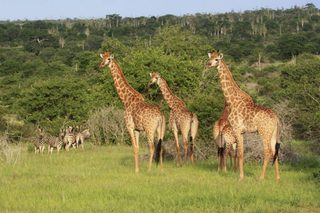
Setting off from Katima Mulilo with everything we might need. It felt like we were taking everything AND the kitchen sink. We were a party of 6, which meant camping gear for all, enough food and fresh water to keep everyone happy and the vitally important stash of alcohol to keep everyone sane, depending on what we were to find! I have to say I was a little sceptical but was desperately trying to keep an open mind.
About 2 hours after leaving Katima, we turned right onto a very normal African dirt track and made steady progress for about 30 minutes until we reached a barrier, a very open barrier that looked like it hadn’t closed in a long time, effectively the unofficial border between Namibia and Angola. This was the Ranger HQ and where we would meet the head ranger of the park. In normal circumstances, you would expect an officious elderly man (as opposed to a woman) and all papers and permissions would be scrutinised to the nth degree – possibly in the hope that something ‘sweet’ might be passed across to ease the passage.

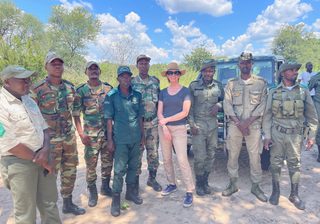
Not in Angola. The Head Ranger called ‘Verrisimo’, literal translation from Portuguese ‘Very True’, came bouncing over, a young man of probably about 40 years with a huge smile, offering his hand. He had a quick look at the manifest, counted heads, rounded up his rangers and said ‘Let's go!’ Normal practice in these scenarios when there are lots of rangers in uniform with guns, is to keep your camera hidden but I sensed this was not one of those times. I quickly asked the rangers if we could have a photo with 2 or 3 of them. Smiles wider than a hippo’s they obliged and before I knew it we had 15 camouflaged rangers all armed with AK-47’s jostling for position. It was a really touching moment and a reminder that this was a big moment for them as the chances that they had seen western tourists would be close to nil.
Now with an escort we headed into the National Park. It was relatively slow going as the road was sand but this was fine as it meant we had time to appreciate where we were. The road brought us out after about 30 minutes into a clearing overlooking a flood plain, there were traditional Rondavels dotted around the place and a larger dilapidated building which was obviously the remains of an old lodge. Talking through very broken Portug-lish to Verrisimo, who had by now comfortably settled into his new role as chief guide, I learned that the lodge used to be owned by a senior government official who would fly into the local airstrip every now and then with a large briefcase (rumoured to be full of cash) before he was arrested and thrown in jail (presumably without said briefcase) the rangers now used the lodge as a base. Whilst it sounds extravagant, it wasn’t, the place was run down: the wooden walkways were a rotting ankle breaker; a ghostly mess area with sofa frames missing their cushions and the empty bar; the only part of the entire lodge that had any TLC was the thatch roofs on the Rondavels offering the rangers shelter.

We kept moving further into the park. As it stands, there is one road so we couldn’t get lost and we also had our friendly guide so it was a proper belt and braces approach. We came upon a second Ranger Camp – this was more in line with what you might associate with an official anti-poaching bushcamp. A plethora of tented accommodation set within a fence – protection from the curious elephants. We stopped here to eat our packed lunches which we shared with some of the Rangers and got talking. Lots of these men had been in the bush on and off for the best part of twenty years. This was their life. They had families back in their homes and villages, but this was their life for up to 3 months at a time before heading home for a month to see their wives and kids and tending to their land. It seemed an incredible existence at first, but 20 years is a long time to be hunting poachers whilst living in a tent. We were told about their twice-daily patrols, what they were seeing (animals and humans) and what they did to keep themselves entertained during their downtime. Overall, these Rangers were in incredible spirits, only too happy to chat / gesture and made us feel super welcome. Always with an enormous smile. It was truly lovely to see this country that had been for so long witnessing intense infighting now seemed at peace with itself.
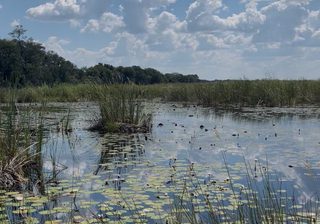
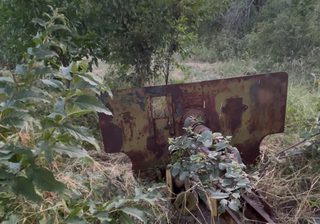
Having found a shady campsite around an enormous termite mound – the biggest issue was finding somewhere that the grass was not 6 foot tall as it was March – we set about getting camp organised. As is often the way in what appears to be remote Africa, as soon as you turn your back to focus on something people appear and want to help. In this case it was the Rangers, presumably keen to avoid another foot patrol, they had jumped in their vehicle and come out to help us. It is certainly the first time 3 camouflaged dressed men with AK47’s slung across their backs have put my tent up.
The mess areas, otherwise known as a termite mound, was so large we could get seats and our table up there, and from here, under the shade of the ebony trees we were able to see for miles over the long grass.
Due to it being the green season the majority of the animals were enjoying the delights of the shaded forest areas. With plenty to eat and quench thirst they had little need to make it down out of their safe haven to drink at the river. Game was sparse but the beauty of it was knowing that aside from our ranger friends, there was not another soul for miles. When we did see a herd of elephants wandering down to drink, it was made all the more special knowing that these were truly wild beasts of Angola and not the quasi-human habituated variety in busier areas. The exquisiteness of the isolation only gave way to the natural beauty of the park: wide clear water channels ideal for game viewing; sporadic waterlily-infested waterholes; the sole sand path which was used as our road; the uninterrupted birdsong; the blue skies unpolluted with clouds even at this time of year.


The fact that we saw some game – the highlight being the leopard at dusk – was a big enough reward as we were not expecting to see much at all due to the season and the lack of habituation. There is proof that there is a reasonable population of elephants, plains game and some predators in order for the circle of life to thrive under the right protection. It also creates a wilderness environment that has not yet been explored, remains untouched and offers any safari aficionado a new frontier to discover, so long as they are happy with huge wild open spaces and no other tourists.
Simone Micheletti is hoping to start building his environmentally sensitive camp any time now and he is hoping to be up and running in Angola from mid-2026. I would seriously recommend enjoying this beautiful, hidden (for now) gem. Access is easy from Namibia and I would highly advise spending time at Serondella Lodge and Nkasa Lapala Lodge in the Caprivi as part of a circuit.
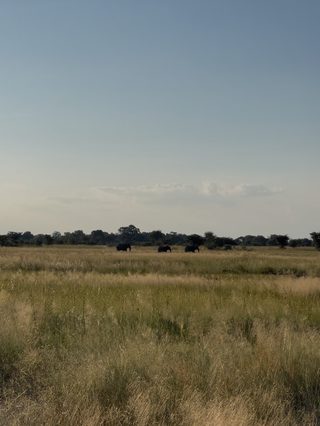
Alistair was travelling in Angola as a guest of the Kavango-Zambezi Transfrontier Conservation Area which is a coalition of tourism boards in Namibia, Angola, Botswana, Zambia and Zimbabwe whose goal it is to develop tourism in these areas and promote multiple country visits. Whilst in the area he also stayed at: The Old House in Kasane; visited various spots in Kafue National Park; Nkasa Lupala Tented Camp in Namibia and Ilala Lodge in Victoria Falls. All of which can be combined with a safari into Angola.
and start planning your tailor-made vacation

